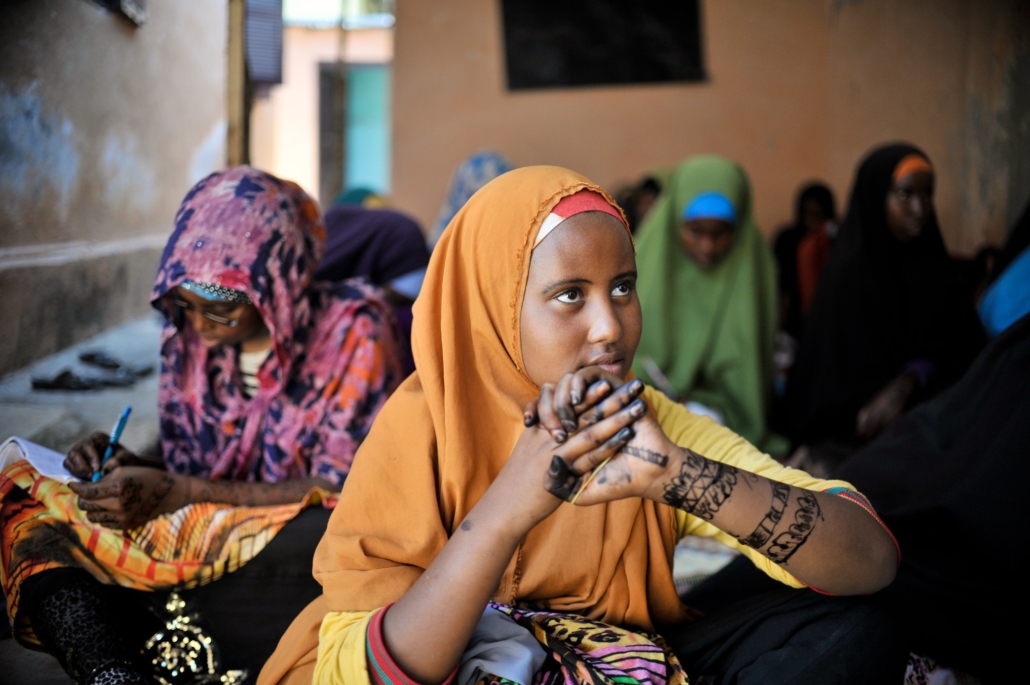Fighting Female Genital Mutilation in Somalia

Female genital mutilation (FGM) impacts more than 200 million women all around the world. The practice, which girls mostly experience between their infancy and teenage years, encompasses a range of procedures that involve the partial or total removal of external genitalia. It usually occurs in an informal setting without anesthesia. FGM is a global concern, but sadly there is a collection of nations in Africa, the Middle East and Asia that grant it legitimacy. One of these nations is Somalia, and as the COVID-19 pandemic forces many people to stay at home, circumcisors are subjecting women to door-to-door mutilation. Here is some information about female genital mutilation in Somalia and how the COVID-19 pandemic is impacting it.
A Universal Ritual
While the prevalence of FGM varies greatly across the many countries that practice it, Somalia has the highest percentage at 98% according to UNICEF. Many nations, including the United Republic of Tanzania and Togo, have met the practice with disdain and objection; however, more than half the women in Somalia think it should continue.
To most people, this would seem outside the realm of possibility, but tradition runs deep in Somalia, and disputing the practice of genital mutilation holds a gravity on par with blasphemy. The procedure itself is a family experience and a rite of passage where, according to Islamic Relief Worldwide, local women use “knives, scissors or razor blades to remove parts of the genitals, while female relatives hold the girl down.”
Cutting Season
There is no law in the Somali Constitution that specifically criminalizes and punishes the practice of female genital mutilation in Somalia, so the tradition remains stable; so much so that experts recognize summer vacation as “cutting season” for girls. Breaking from school means they have time to undergo and recover from the procedure before the next school year starts.
While there is little formal data to strengthen this case, Somali circumcisors agree that the months of July and August are their peak season for FGM. They even pride themselves on the fact that girls travel from other countries like Djibouti to undergo circumcision in Somalia; however, the United Nations Population Fund (UNFPA) saw a “massive” jump in the number of girls who underwent the procedure in 2020 due to coronavirus lockdown.
COVID-19 and FGM
The UNFPA projected that 290,000 girls experienced cutting in 2020 and that an extra 2 million girls could undergo cutting in the next decade due to the setbacks of prevention programs along with the vitality of circumcisors in their efforts to lobby the public into believing that FGM is a healthy rite of passage into womanhood. The lockdown has also led to this massive increase in FGM and the economic state has driven circumcisors to go from door to door, offering to cut the girls stuck inside. While the frequency of mutilation rises, the awareness declines as advocates cannot access communities where FGM is popular.
Solutions
The pandemic has had detrimental effects on efforts to eliminate female genital mutilation in Somalia, but the country has not lost hope. Young women from all across the region are taking a stand against female genital mutilation and those who perpetuate it. The Y-Peer Youth Network is one such group. In 2002, the UNFPA founded the network to educate young people, communities and even health care workers about sexual and reproductive health. Other topics of advocacy are gender-based violence and child marriage.
While FGM is a widespread issue in Somalia, the young girls working to stop it are making waves and shaking the status quo to its core. To learn more about the Y-Peer Youth Network, check out its website.
– Matthew Hayden
Photo: Flickr
